Abstract
Increases in environmental contamination lead to a progressive deterioration of environmental quality. This condition challenges our global society to find effective measures of remediation to reverse the negative conditions that severely threaten human and environmental health. We discuss the progress being made toward this goal through application of bioremediation techniques. Bioremediation generally utilizes microbes (bacteria, fungi, yeast, and algae), although higher plants are used in some applications. New bioremediation approaches are emerging based on advances in molecular biology and process engineering. Bioremediation continues to be the favored approach for processing biological wastes and avoiding microbial pathogenesis. Bioremediation may also play an increasing role in concentrating metals and radioactive materials to avoid toxicity or to recover metals for reuse. Microbes can biodegrade organic chemicals; purposeful enhancement of this natural process can aid in pollutant degradation and waste-site cleanup operations. Recently developed rapid-screening assays can identify organisms capable of degrading specific wastes and new gene-probe methods can ascertain their abundance at specific sites. New tools and techniques for use of bioremediation in situ, in biofilters, and in bioreactors are contributing to the rapid growth of this field. Bioremediation has already proven itself to be a cost-effective and beneficial addition to chemical and physical methods of managing wastes and environmental pollutants. We anticipate that it will play an increasingly important role as a result of new and emerging techniques and processes.
Full text
PDF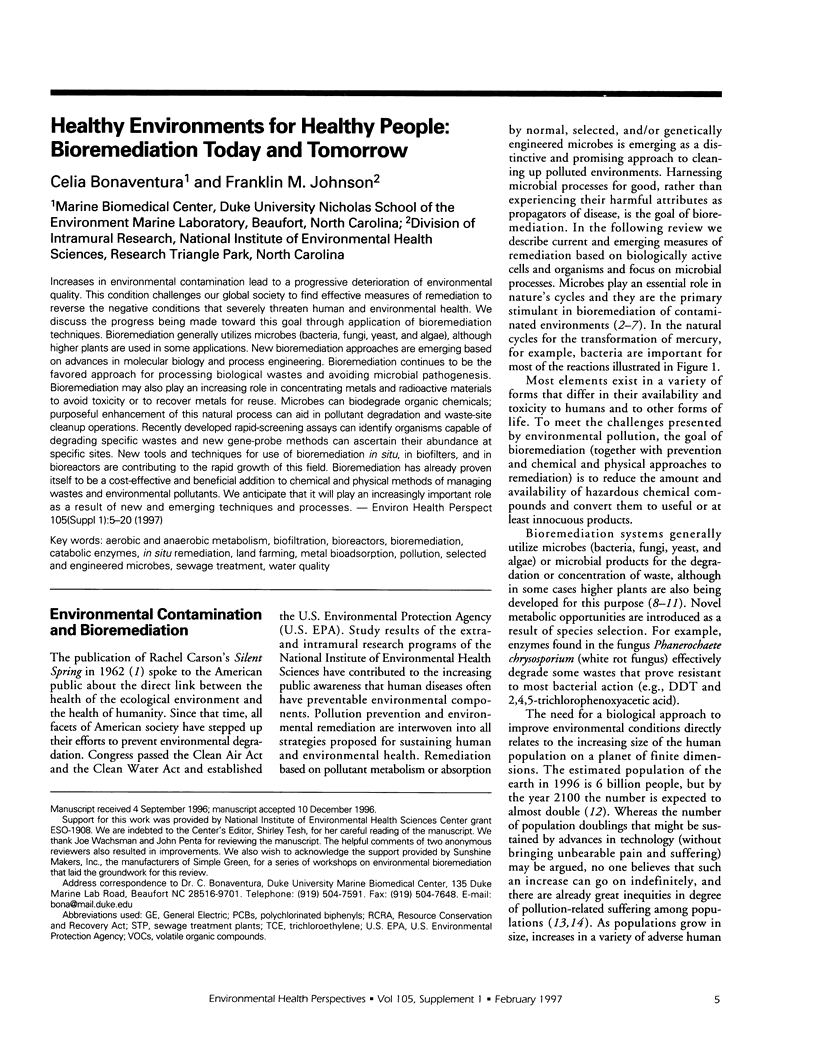
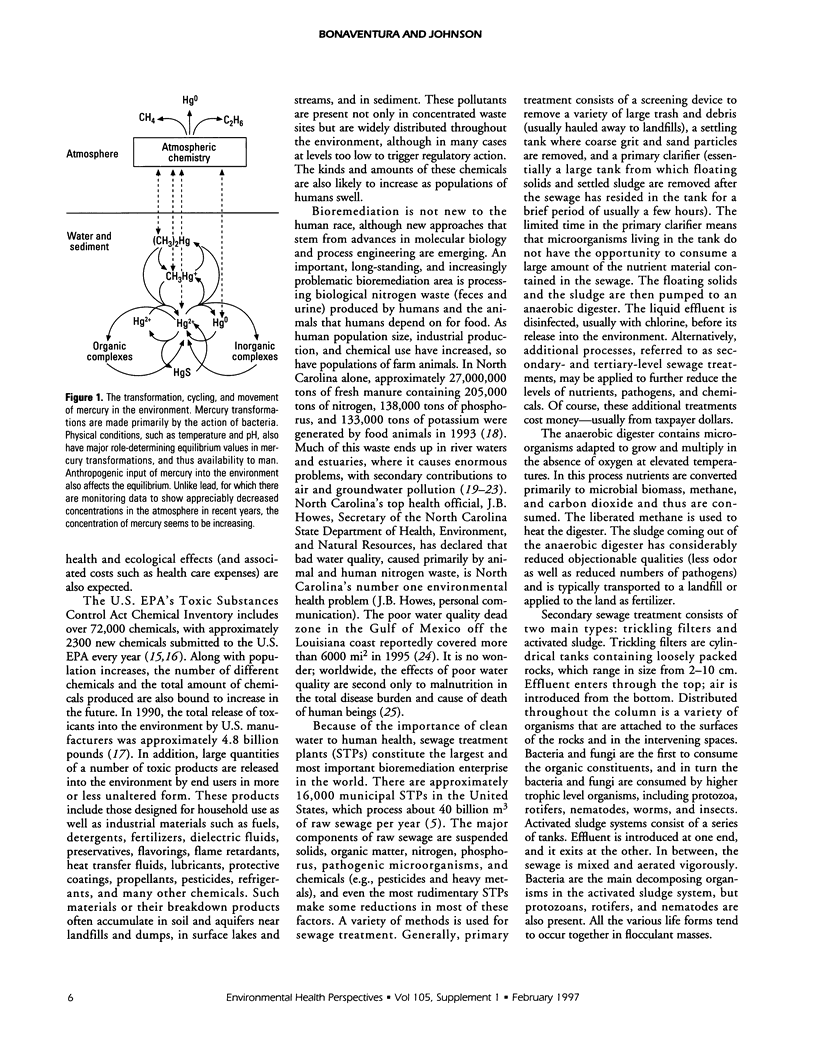
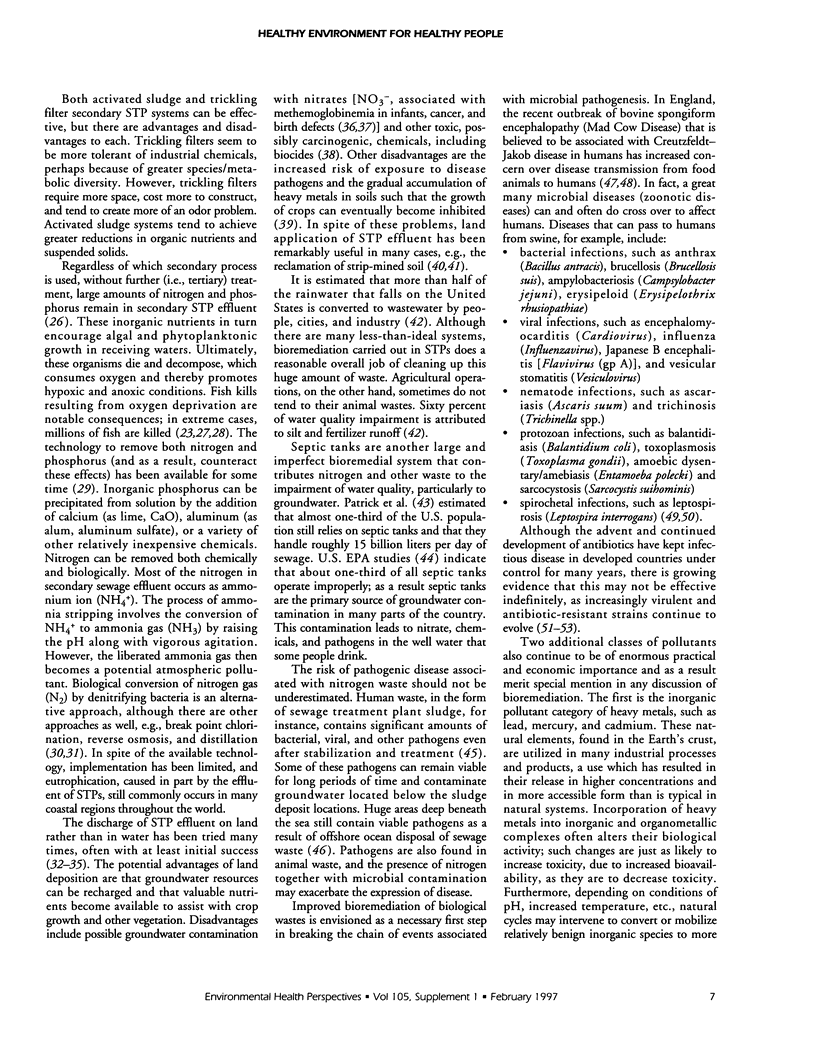
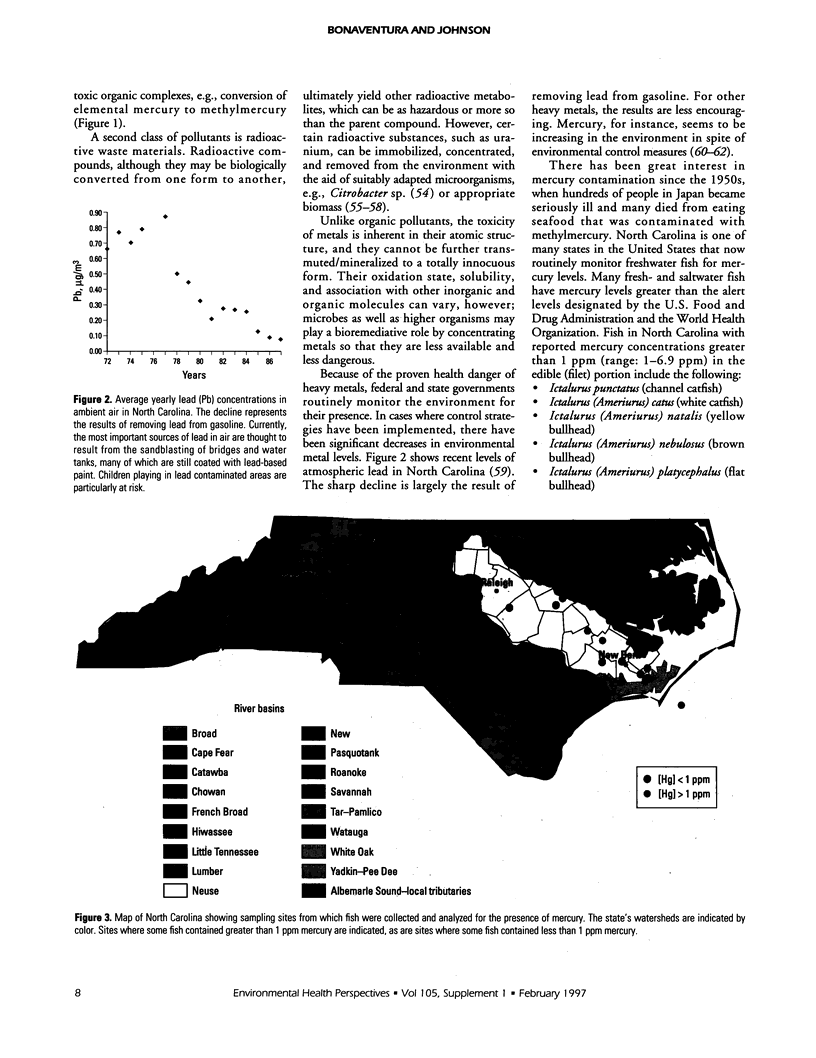
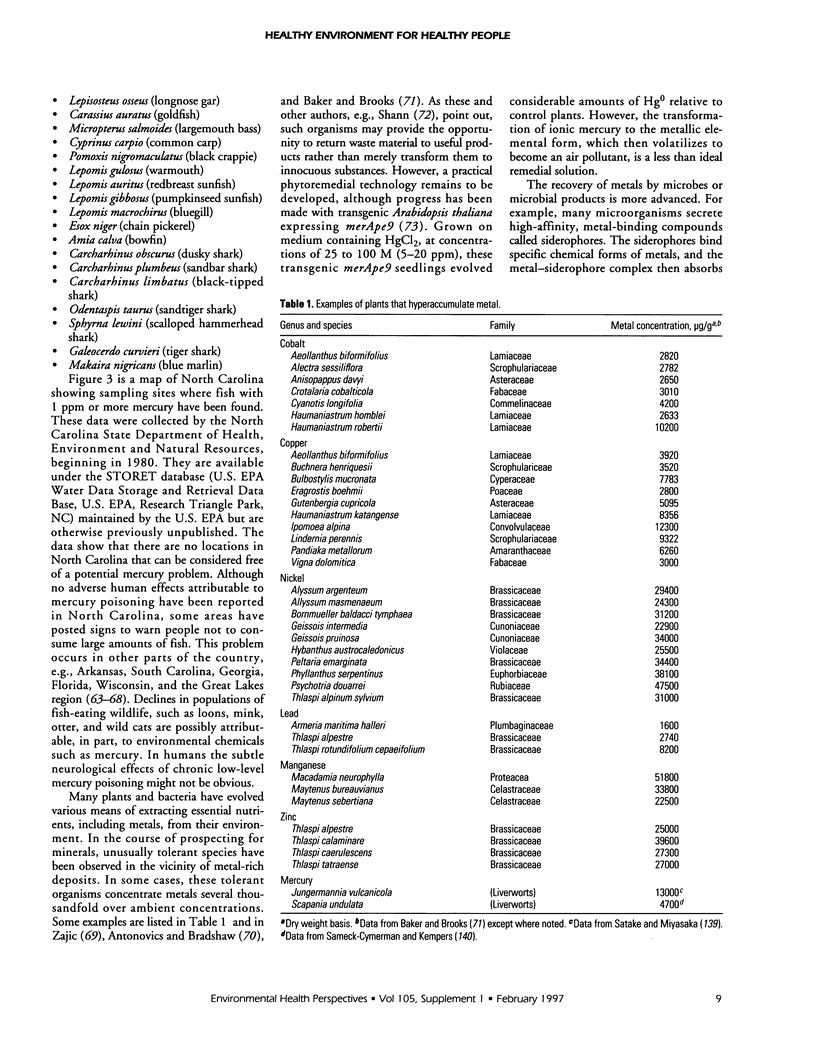
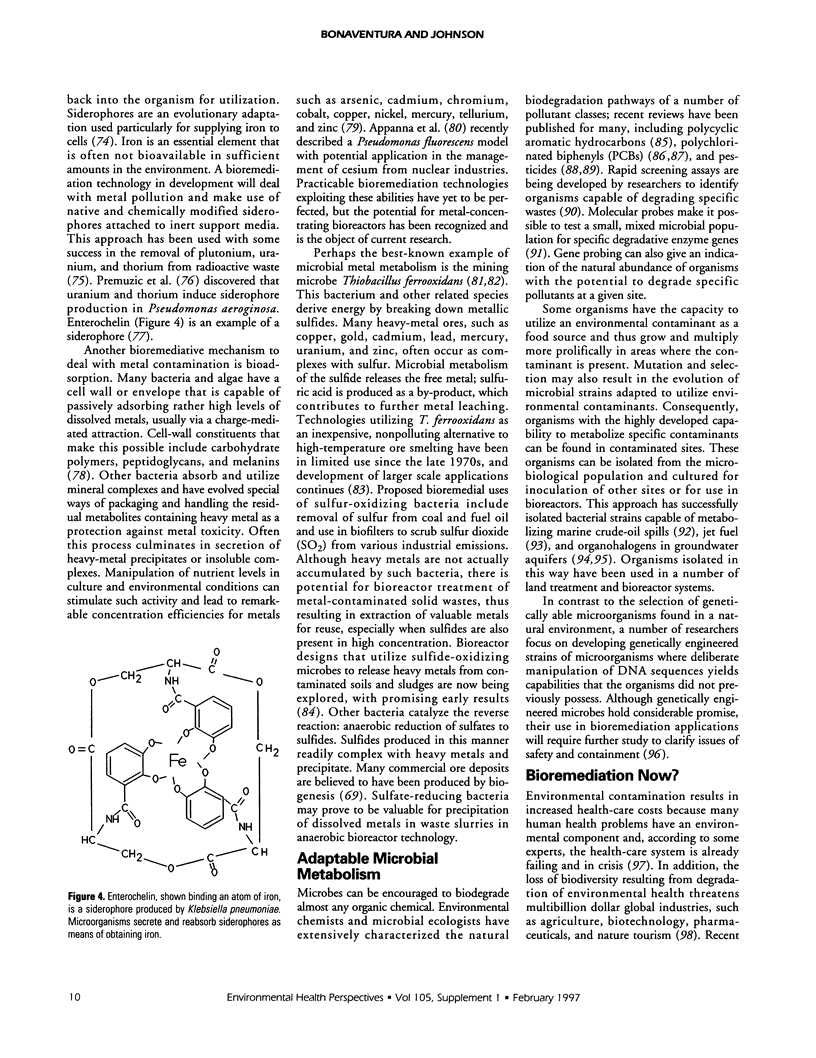
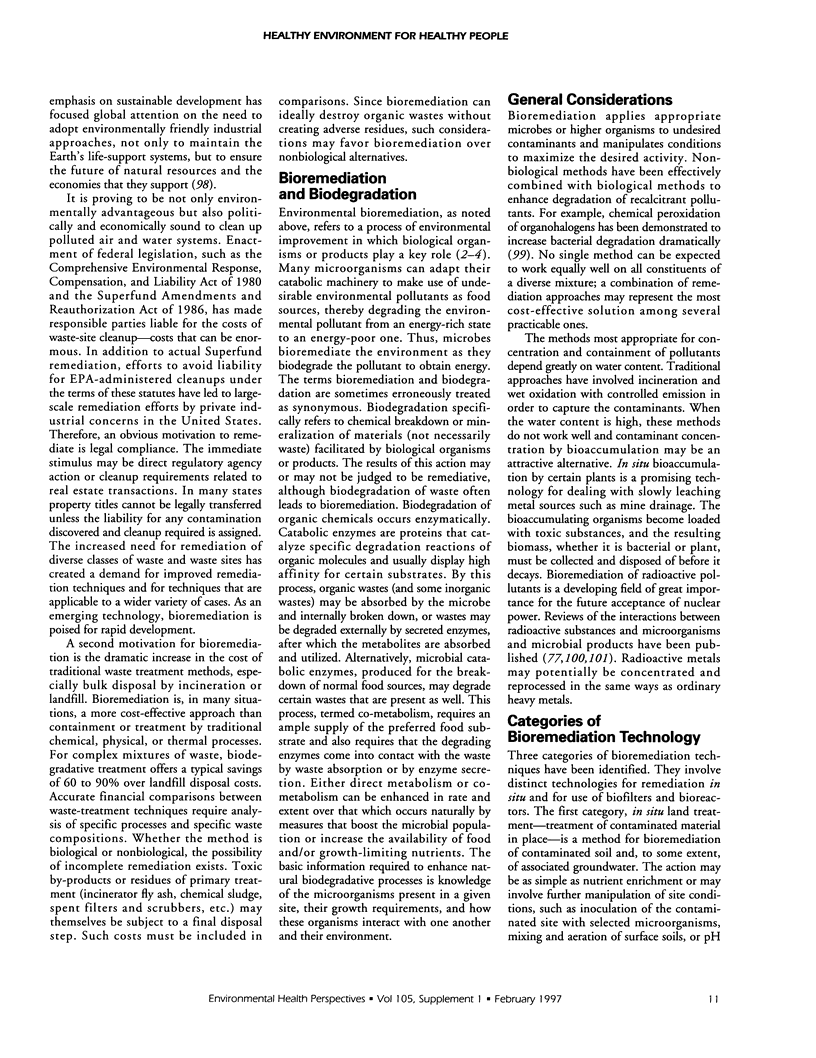
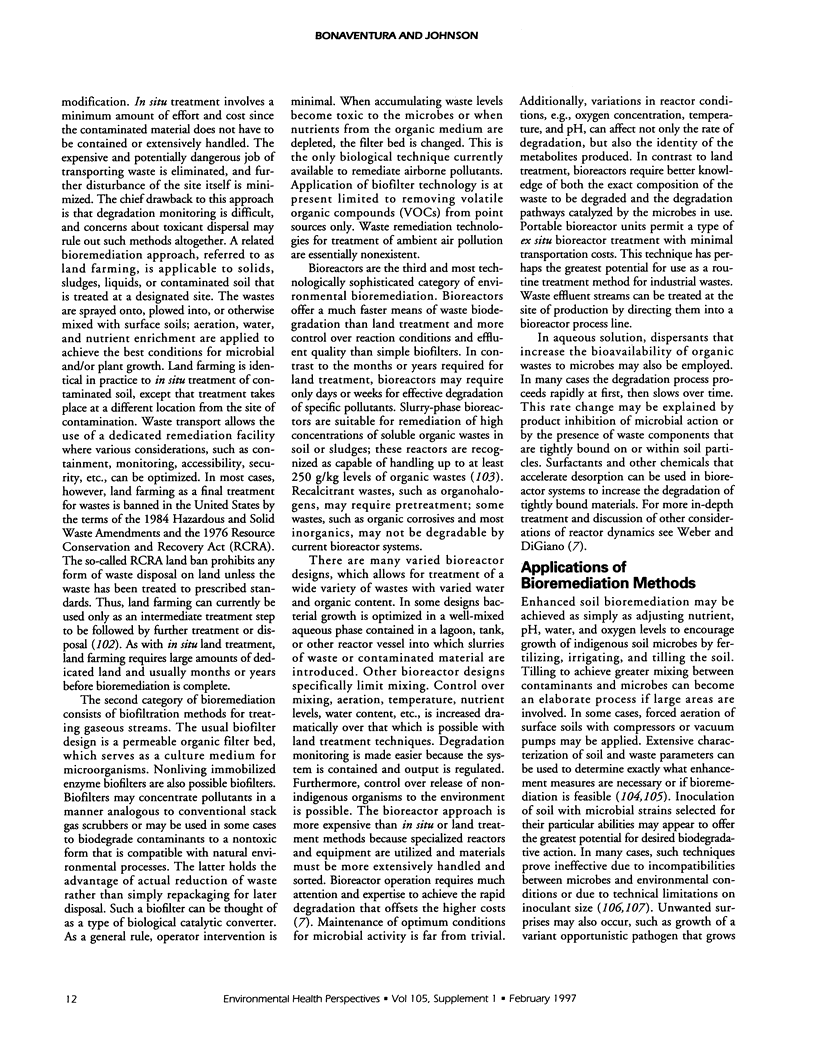
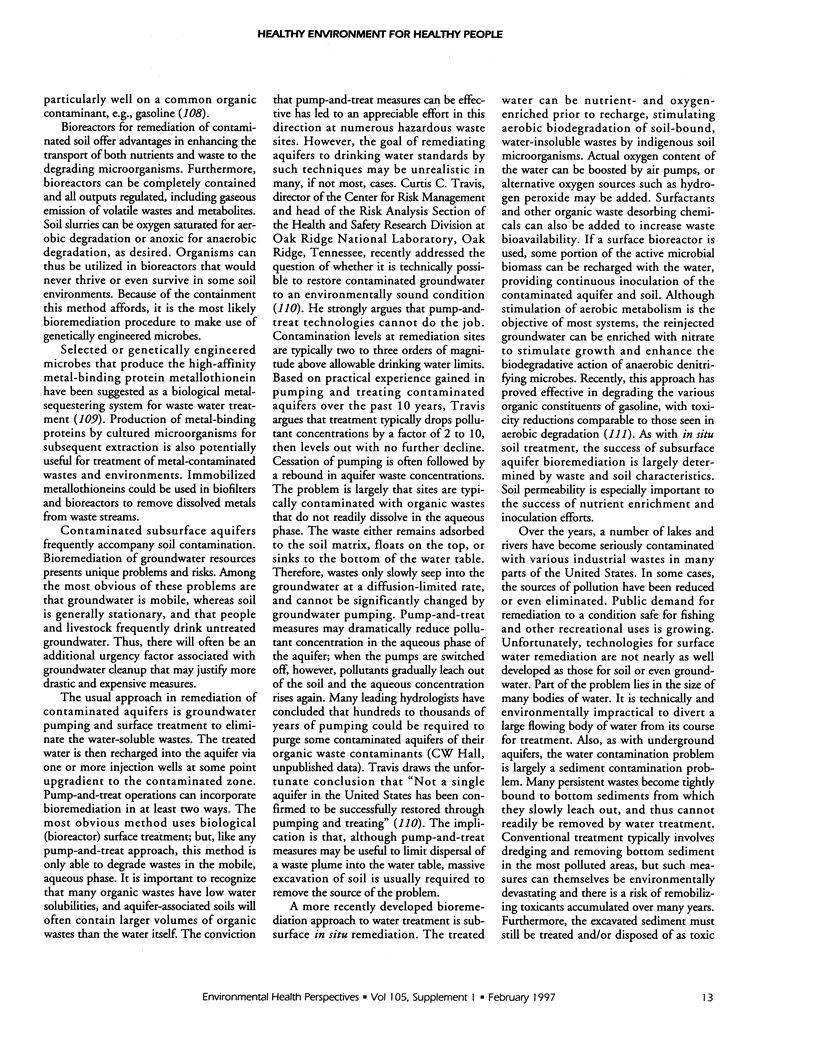
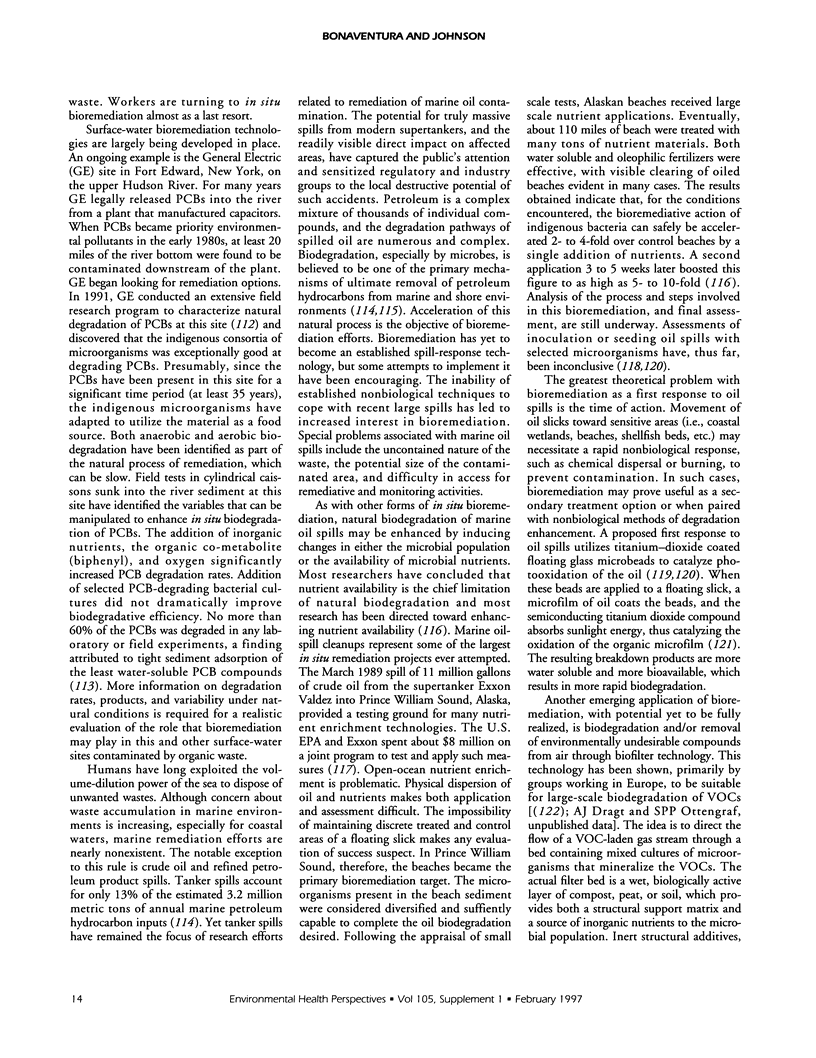
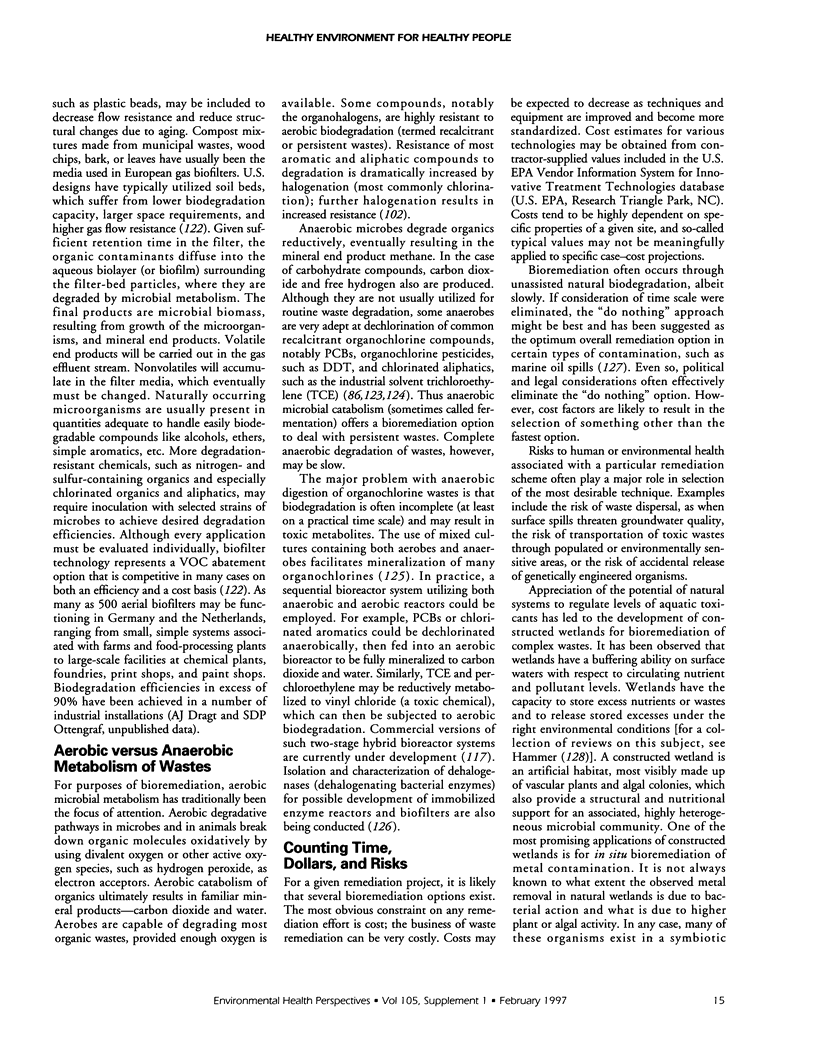
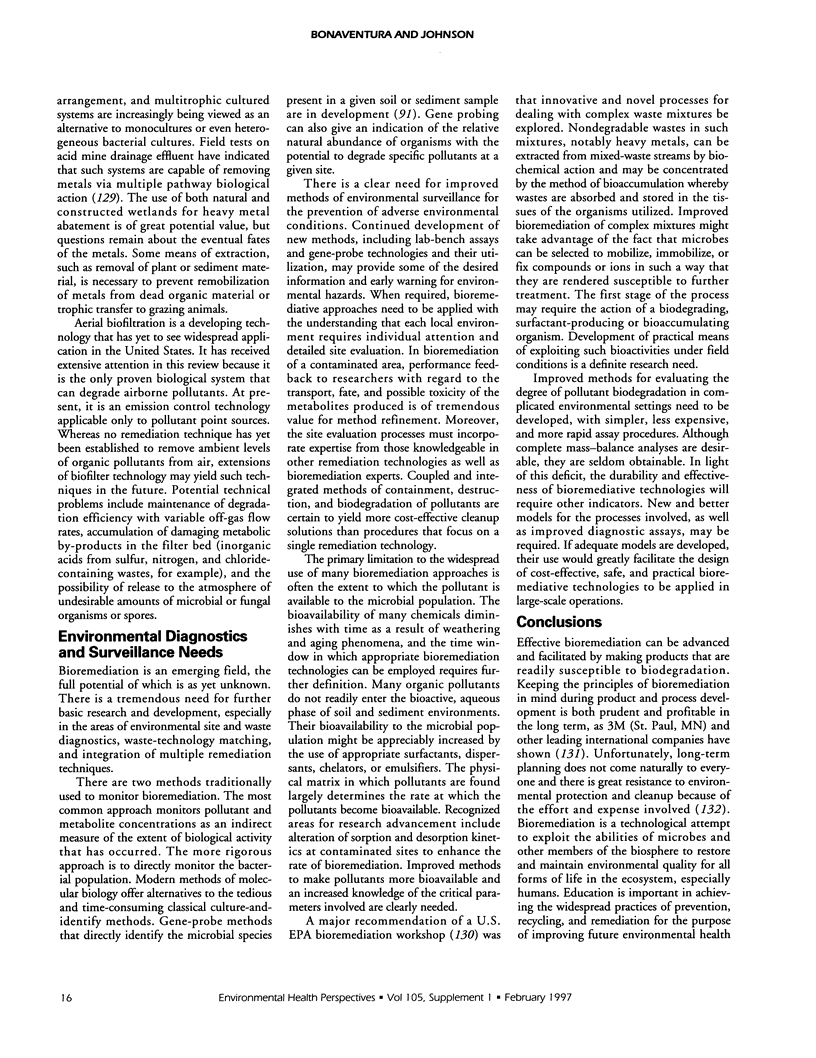
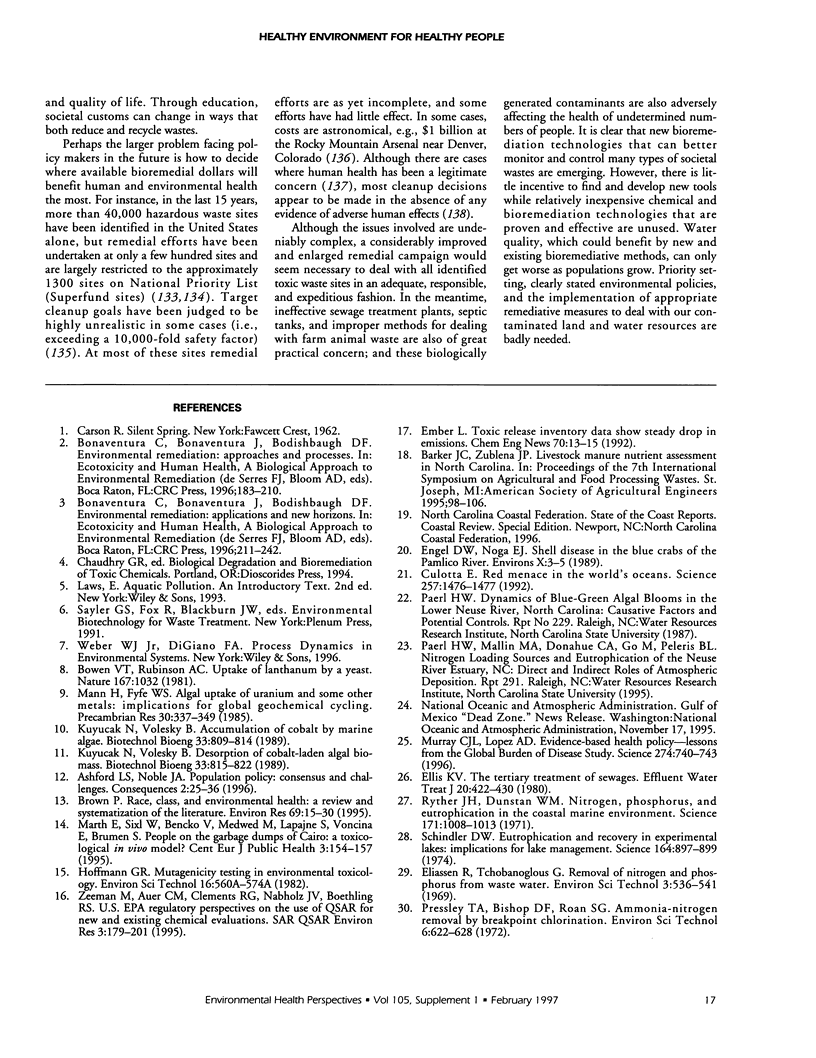
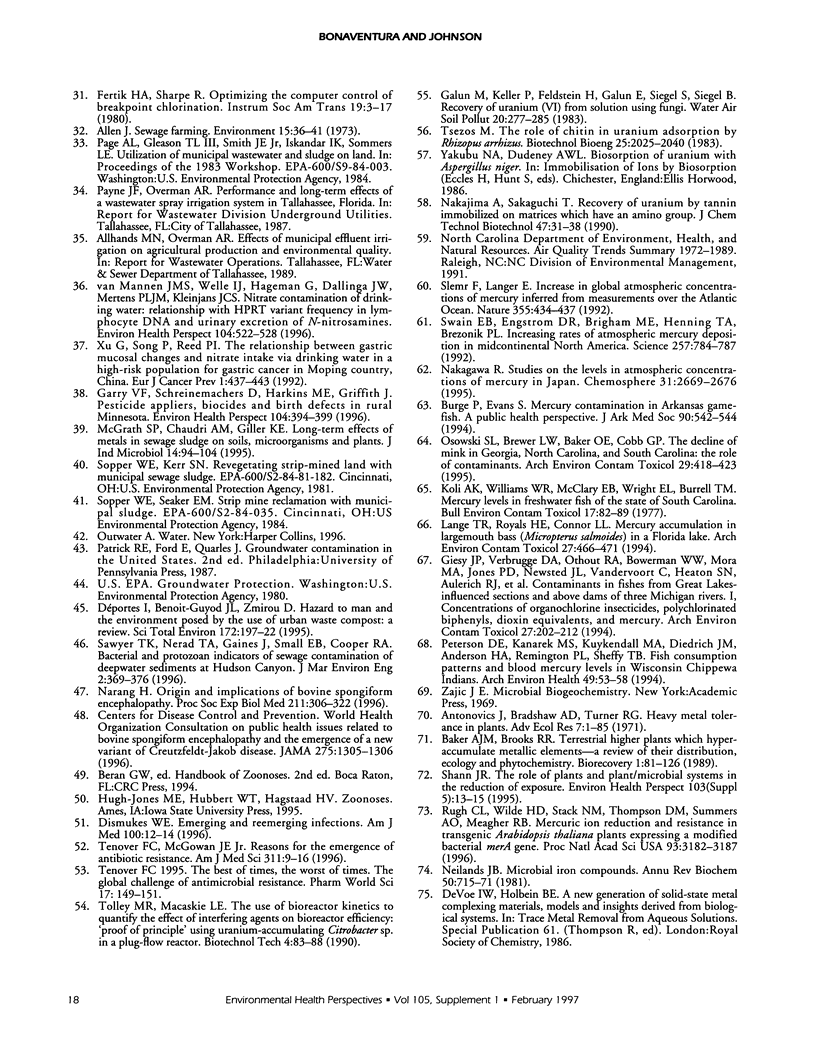
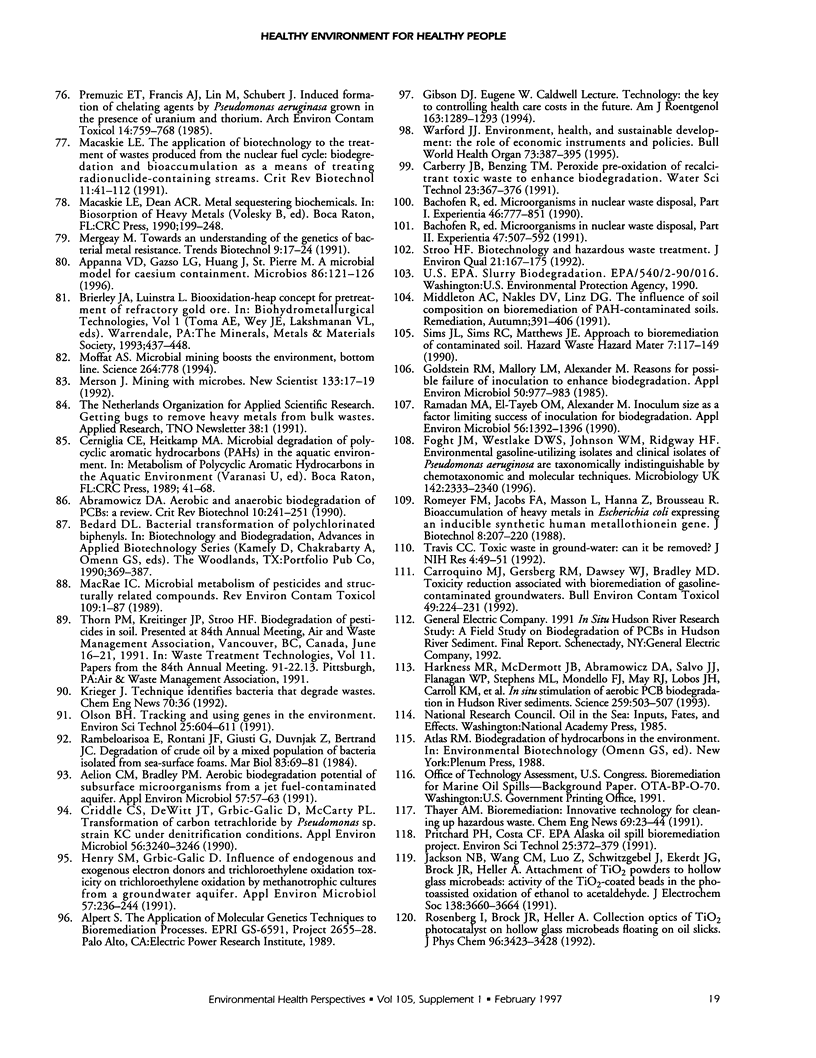
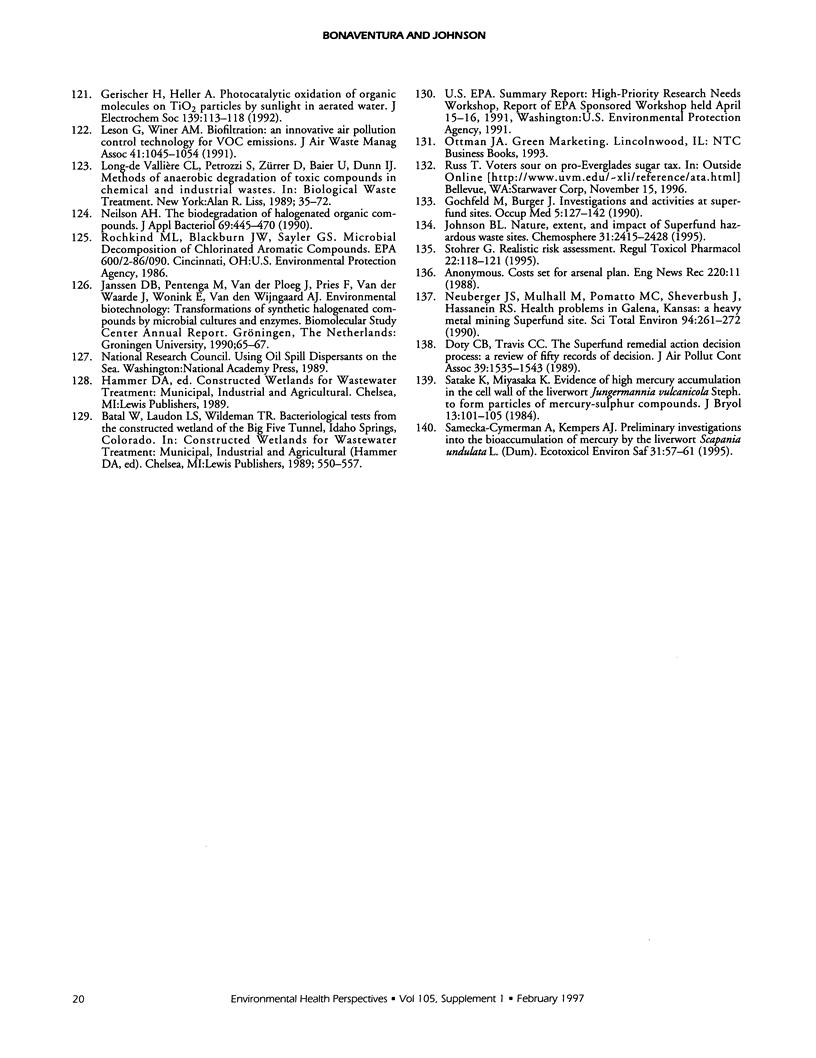
Images in this article
Selected References
These references are in PubMed. This may not be the complete list of references from this article.
- Aelion C. M., Bradley P. M. Aerobic biodegradation potential of subsurface microorganisms from a jet fuel-contaminated aquifer. Appl Environ Microbiol. 1991 Jan;57(1):57–63. doi: 10.1128/aem.57.1.57-63.1991. [DOI] [PMC free article] [PubMed] [Google Scholar]
- BOWEN V. T., RUBINSON A. C. Uptake of lanthanum by a yeast. Nature. 1951 Jun 23;167(4260):1032–1032. doi: 10.1038/1671032a0. [DOI] [PubMed] [Google Scholar]
- Brown P. Race, class, and environmental health: a review and systematization of the literature. Environ Res. 1995 Apr;69(1):15–30. doi: 10.1006/enrs.1995.1021. [DOI] [PubMed] [Google Scholar]
- Burge P., Evans S. Mercury contamination in Arkansas gamefish. A public health perspective. J Ark Med Soc. 1994 Apr;90(11):542–544. [PubMed] [Google Scholar]
- Carroquino M. J., Gersberg R. M., Dawsey W. J., Bradley M. D. Toxicity reduction associated with bioremediation of gasoline-contaminated groundwaters. Bull Environ Contam Toxicol. 1992 Aug;49(2):224–231. doi: 10.1007/BF00191759. [DOI] [PubMed] [Google Scholar]
- Criddle C. S., DeWitt J. T., Grbić-Galić D., McCarty P. L. Transformation of carbon tetrachloride by Pseudomonas sp. strain KC under denitrification conditions. Appl Environ Microbiol. 1990 Nov;56(11):3240–3246. doi: 10.1128/aem.56.11.3240-3246.1990. [DOI] [PMC free article] [PubMed] [Google Scholar]
- Culotta E. Red Menace in the World's Oceans. Science. 1992 Sep 11;257(5076):1476–1477. doi: 10.1126/science.257.5076.1476. [DOI] [PubMed] [Google Scholar]
- Dismukes W. E. Emerging and reemerging infections. Am J Med. 1996 Jan;100(1):12–14. doi: 10.1016/s0002-9343(96)90004-2. [DOI] [PubMed] [Google Scholar]
- Doty C. B., Travis C. C. The superfund remedial action decision process: a review of fifty records of decision. JAPCA. 1989 Dec;39(12):1535–1543. doi: 10.1080/08940630.1989.10466646. [DOI] [PubMed] [Google Scholar]
- Déportes I., Benoit-Guyod J. L., Zmirou D. Hazard to man and the environment posed by the use of urban waste compost: a review. Sci Total Environ. 1995 Nov 30;172(2-3):197–122. doi: 10.1016/0048-9697(95)04808-1. [DOI] [PMC free article] [PubMed] [Google Scholar]
- Foght J. M., Westlake D. W., Johnson W. M., Ridgway H. F. Environmental gasoline-utilizing isolates and clinical isolates of Pseudomonas aeruginosa are taxonomically indistinguishable by chemotaxonomic and molecular techniques. Microbiology. 1996 Sep;142(Pt 9):2333–2340. doi: 10.1099/00221287-142-9-2333. [DOI] [PubMed] [Google Scholar]
- Galun M., Keller P., Malki D., Feldstein H., Galun E., Siegel S. M., Siegel B. Z. Removal of Uranium(VI) from Solution by Fungal Biomass and Fungal Wall-Related Biopolymers. Science. 1983 Jan 21;219(4582):285–286. doi: 10.1126/science.219.4582.285. [DOI] [PubMed] [Google Scholar]
- Garry V. F., Schreinemachers D., Harkins M. E., Griffith J. Pesticide appliers, biocides, and birth defects in rural Minnesota. Environ Health Perspect. 1996 Apr;104(4):394–399. doi: 10.1289/ehp.96104394. [DOI] [PMC free article] [PubMed] [Google Scholar]
- Gibson D. J. Eugene W. Caldwell Lecture. Technology: the key to controlling health care costs in the future. AJR Am J Roentgenol. 1994 Dec;163(6):1289–1293. doi: 10.2214/ajr.163.6.7992715. [DOI] [PubMed] [Google Scholar]
- Giesy J. P., Verbrugge D. A., Othout R. A., Bowerman W. W., Mora M. A., Jones P. D., Newsted J. L., Vandervoort C., Heaton S. N., Aulerich R. J. Contaminants in fishes from Great Lakes-influenced sections and above dams of three Michigan rivers. I: Concentrations of organo chlorine insecticides, polychlorinated biphenyls, dioxin equivalents, and mercury. Arch Environ Contam Toxicol. 1994 Aug;27(2):202–212. doi: 10.1007/BF00214264. [DOI] [PubMed] [Google Scholar]
- Gochfeld M., Burger J. Investigations and activities at superfund sites. Occup Med. 1990 Jan-Mar;5(1):127–142. [PubMed] [Google Scholar]
- Goldstein R. M., Mallory L. M., Alexander M. Reasons for possible failure of inoculation to enhance biodegradation. Appl Environ Microbiol. 1985 Oct;50(4):977–983. doi: 10.1128/aem.50.4.977-983.1985. [DOI] [PMC free article] [PubMed] [Google Scholar]
- Harkness M. R., McDermott J. B., Abramowicz D. A., Salvo J. J., Flanagan W. P., Stephens M. L., Mondello F. J., May R. J., Lobos J. H., Carroll K. M. In situ stimulation of aerobic PCB biodegradation in Hudson River sediments. Science. 1993 Jan 22;259(5094):503–507. doi: 10.1126/science.8424172. [DOI] [PubMed] [Google Scholar]
- Henry S. M., Grbić-Galić D. Influence of endogenous and exogenous electron donors and trichloroethylene oxidation toxicity on trichloroethylene oxidation by methanotrophic cultures from a groundwater aquifer. Appl Environ Microbiol. 1991 Jan;57(1):236–244. doi: 10.1128/aem.57.1.236-244.1991. [DOI] [PMC free article] [PubMed] [Google Scholar]
- Johnson B. L. Nature, extent, and impact of Superfund hazardous waste sites. Chemosphere. 1995 Jul;31(1):2415–2428. doi: 10.1016/0045-6535(95)00112-l. [DOI] [PubMed] [Google Scholar]
- Koli A. K., Williams W. R., McClary E. B., Wright E. L., Burrell T. M. Mercury levels in freshwater fish of the state of South Carolina. Bull Environ Contam Toxicol. 1977 Jan;17(1):82–89. doi: 10.1007/BF01685266. [DOI] [PubMed] [Google Scholar]
- Lange T. R., Royals H. E., Connor L. L. Mercury accumulation in largemouth bass (Micropterus salmoides) in a Florida lake. Arch Environ Contam Toxicol. 1994 Nov;27(4):466–471. doi: 10.1007/BF00214837. [DOI] [PubMed] [Google Scholar]
- Leson G., Winer A. M. Biofiltration: an innovative air pollution control technology for VOC emissions. J Air Waste Manage Assoc. 1991 Aug;41(8):1045–1054. doi: 10.1080/10473289.1991.10466898. [DOI] [PubMed] [Google Scholar]
- Long-de Vallière C. L., Petrozzi S., Zürrer D., Baier U., Dunn I. J. Methods of anaerobic degradation of toxic compounds in chemical and industrial wastewaters. Adv Biotechnol Processes. 1989;12:35–72. [PubMed] [Google Scholar]
- MacRae I. C. Microbial metabolism of pesticides and structurally related compounds. Rev Environ Contam Toxicol. 1989;109:1–87. doi: 10.1007/978-1-4684-7086-4_1. [DOI] [PubMed] [Google Scholar]
- Macaskie L. E. The application of biotechnology to the treatment of wastes produced from the nuclear fuel cycle: biodegradation and bioaccumulation as a means of treating radionuclide-containing streams. Crit Rev Biotechnol. 1991;11(1):41–112. doi: 10.3109/07388559109069183. [DOI] [PubMed] [Google Scholar]
- Marth E., Sixl W., Bencko V., Medwed M., Lapajne S., Voncina E., Brumen S. People on the garbage dumps of Cairo: a toxicological in vivo model? Cent Eur J Public Health. 1995 Aug;3(3):154–157. [PubMed] [Google Scholar]
- McGrath S. P., Chaudri A. M., Giller K. E. Long-term effects of metals in sewage sludge on soils, microorganisms and plants. J Ind Microbiol. 1995 Feb;14(2):94–104. doi: 10.1007/BF01569890. [DOI] [PubMed] [Google Scholar]
- Mergeay M. Towards an understanding of the genetics of bacterial metal resistance. Trends Biotechnol. 1991 Jan;9(1):17–24. doi: 10.1016/0167-7799(91)90007-5. [DOI] [PubMed] [Google Scholar]
- Moffat A. S. Microbial mining boosts the environment, bottom line. Science. 1994 May 6;264(5160):778–779. doi: 10.1126/science.264.5160.778. [DOI] [PubMed] [Google Scholar]
- Murray C. J., Lopez A. D. Evidence-based health policy--lessons from the Global Burden of Disease Study. Science. 1996 Nov 1;274(5288):740–743. doi: 10.1126/science.274.5288.740. [DOI] [PubMed] [Google Scholar]
- Nakagawa R. Studies on the levels in atmospheric concentrations of mercury in Japan. Chemosphere. 1995 Jul;31(2):2669–2676. doi: 10.1016/0045-6535(95)00138-x. [DOI] [PubMed] [Google Scholar]
- Narang H. Origin and implications of bovine spongiform encephalopathy. Proc Soc Exp Biol Med. 1996 Apr;211(4):306–322. doi: 10.3181/00379727-211-43975. [DOI] [PubMed] [Google Scholar]
- Neilands J. B. Microbial iron compounds. Annu Rev Biochem. 1981;50:715–731. doi: 10.1146/annurev.bi.50.070181.003435. [DOI] [PubMed] [Google Scholar]
- Neilson A. H. The biodegradation of halogenated organic compounds. J Appl Bacteriol. 1990 Oct;69(4):445–470. doi: 10.1111/j.1365-2672.1990.tb01536.x. [DOI] [PubMed] [Google Scholar]
- Neuberger J. S., Mulhall M., Pomatto M. C., Sheverbush J., Hassanein R. S. Health problems in Galena, Kansas: a heavy metal mining Superfund site. Sci Total Environ. 1990 May 15;94(3):261–272. doi: 10.1016/0048-9697(90)90175-t. [DOI] [PubMed] [Google Scholar]
- Osowski S. L., Brewer L. W., Baker O. E., Cobb G. P. The decline of mink in Georgia, North Carolina, and South Carolina: the role of contaminants. Arch Environ Contam Toxicol. 1995 Oct;29(3):418–423. doi: 10.1007/BF00212510. [DOI] [PubMed] [Google Scholar]
- Peterson D. E., Kanarek M. S., Kuykendall M. A., Diedrich J. M., Anderson H. A., Remington P. L., Sheffy T. B. Fish consumption patterns and blood mercury levels in Wisconsin Chippewa Indians. Arch Environ Health. 1994 Jan-Feb;49(1):53–58. doi: 10.1080/00039896.1994.9934415. [DOI] [PubMed] [Google Scholar]
- Premuzic E. T., Francis A. J., Lin M., Schubert J. Induced formation of chelating agents by Pseudomonas aeruginosa grown in presence of thorium and uranium. Arch Environ Contam Toxicol. 1985 Nov;14(6):759–768. doi: 10.1007/BF01055783. [DOI] [PubMed] [Google Scholar]
- Ramadan M. A., el-Tayeb O. M., Alexander M. Inoculum size as a factor limiting success of inoculation for biodegradation. Appl Environ Microbiol. 1990 May;56(5):1392–1396. doi: 10.1128/aem.56.5.1392-1396.1990. [DOI] [PMC free article] [PubMed] [Google Scholar]
- Rugh C. L., Wilde H. D., Stack N. M., Thompson D. M., Summers A. O., Meagher R. B. Mercuric ion reduction and resistance in transgenic Arabidopsis thaliana plants expressing a modified bacterial merA gene. Proc Natl Acad Sci U S A. 1996 Apr 16;93(8):3182–3187. doi: 10.1073/pnas.93.8.3182. [DOI] [PMC free article] [PubMed] [Google Scholar]
- Ryther J. H., Dunstan W. M. Nitrogen, phosphorus, and eutrophication in the coastal marine environment. Science. 1971 Mar 12;171(3975):1008–1013. doi: 10.1126/science.171.3975.1008. [DOI] [PubMed] [Google Scholar]
- Schindler D. W. Eutrophication and recovery in experimental lakes: implications for lake management. Science. 1974 May 24;184(4139):897–899. doi: 10.1126/science.184.4139.897. [DOI] [PubMed] [Google Scholar]
- Shann J. R. The role of plants and plant/microbial systems in the reduction of exposure. Environ Health Perspect. 1995 Jun;103 (Suppl 5):13–15. doi: 10.1289/ehp.95103s413. [DOI] [PMC free article] [PubMed] [Google Scholar]
- Stöhrer G. Realistic risk assessment. Regul Toxicol Pharmacol. 1995 Oct;22(2):118–121. doi: 10.1006/rtph.1995.1077. [DOI] [PubMed] [Google Scholar]
- Swain E. B., Engstrom D. R., Brigham M. E., Henning T. A., Brezonik P. L. Increasing rates of atmospheric mercury deposition in midcontinental north america. Science. 1992 Aug 7;257(5071):784–787. doi: 10.1126/science.257.5071.784. [DOI] [PubMed] [Google Scholar]
- Tenover F. C., McGowan J. E., Jr Reasons for the emergence of antibiotic resistance. Am J Med Sci. 1996 Jan;311(1):9–16. doi: 10.1097/00000441-199601000-00003. [DOI] [PubMed] [Google Scholar]
- Tenover F. C. The best of times, the worst of times. The global challenge of antimicrobial resistance. Pharm World Sci. 1995 Sep 22;17(5):149–151. doi: 10.1007/BF01879708. [DOI] [PubMed] [Google Scholar]
- Warford J. J. Environment, health, and sustainable development: the role of economic instruments and policies. Bull World Health Organ. 1995;73(3):387–395. [PMC free article] [PubMed] [Google Scholar]
- Xu G., Song P., Reed P. I. The relationship between gastric mucosal changes and nitrate intake via drinking water in a high-risk population for gastric cancer in Moping county, China. Eur J Cancer Prev. 1992 Oct;1(6):437–443. doi: 10.1097/00008469-199210000-00007. [DOI] [PubMed] [Google Scholar]
- Zeeman M., Auer C. M., Clements R. G., Nabholz J. V., Boethling R. S. U.S. EPA regulatory perspectives on the use of QSAR for new and existing chemical evaluations. SAR QSAR Environ Res. 1995;3(3):179–201. doi: 10.1080/10629369508234003. [DOI] [PubMed] [Google Scholar]
- van Maanen J. M., Welle I. J., Hageman G., Dallinga J. W., Mertens P. L., Kleinjans J. C. Nitrate contamination of drinking water: relationship with HPRT variant frequency in lymphocyte DNA and urinary excretion of N-nitrosamines. Environ Health Perspect. 1996 May;104(5):522–528. doi: 10.1289/ehp.96104522. [DOI] [PMC free article] [PubMed] [Google Scholar]



